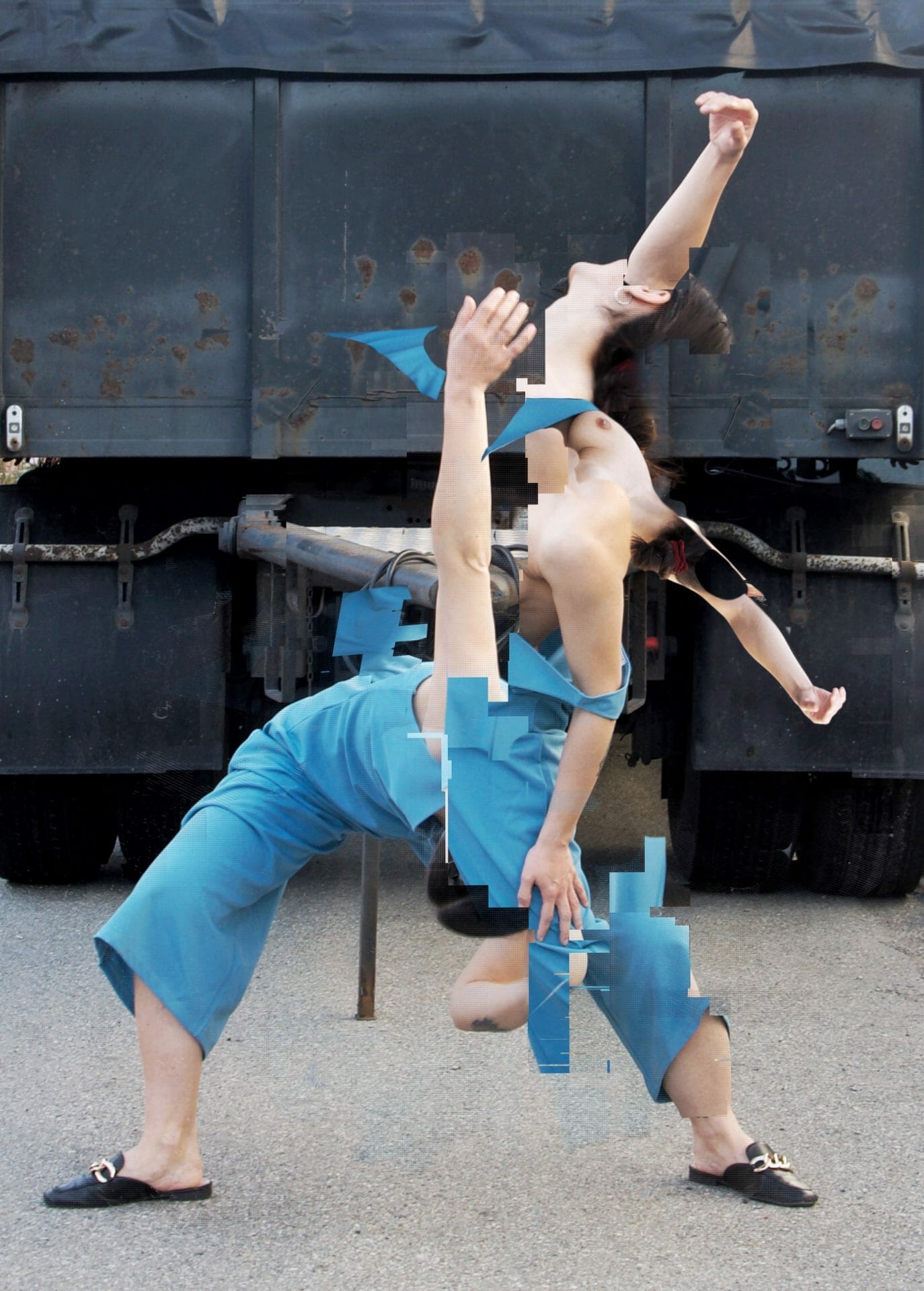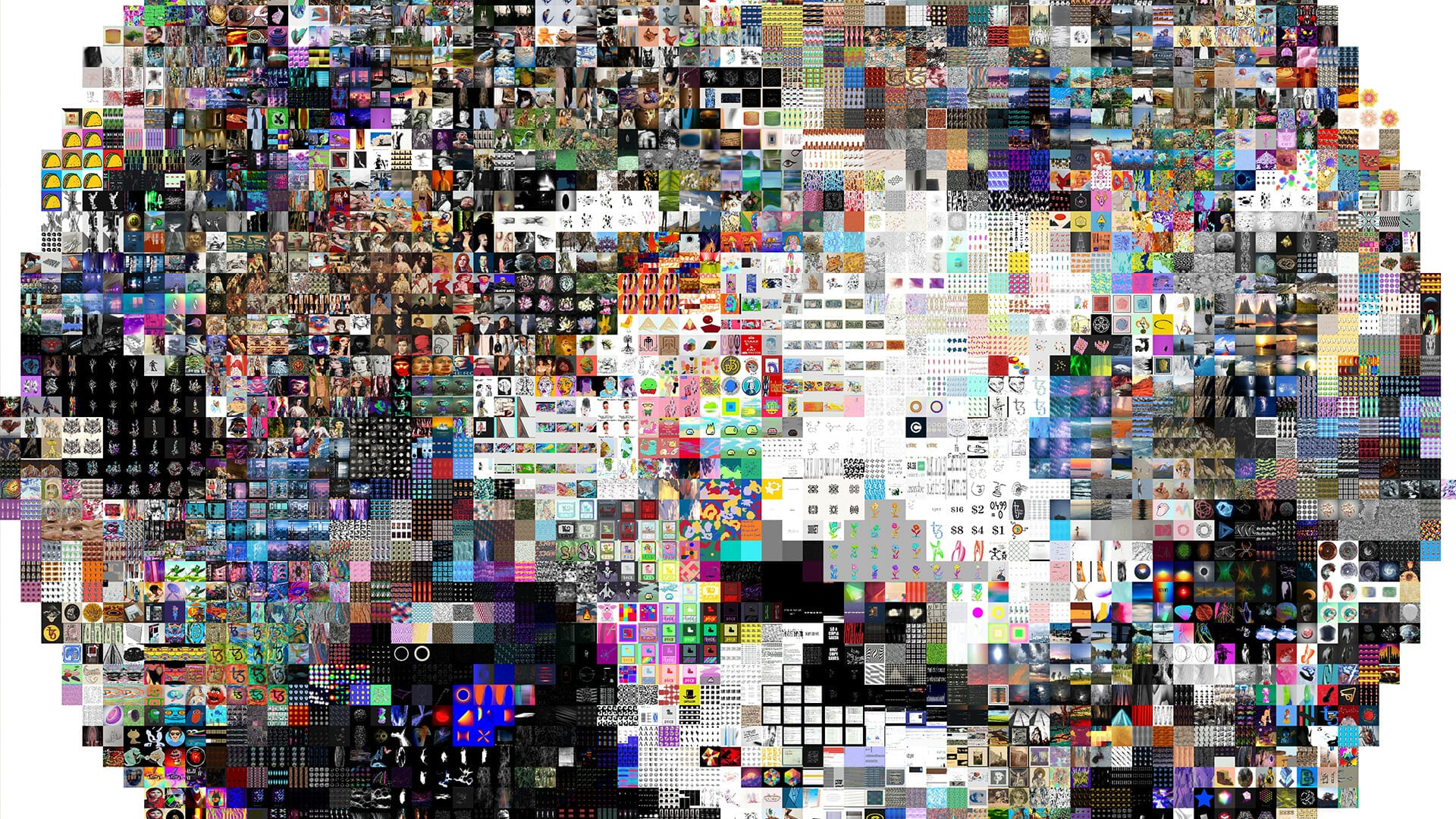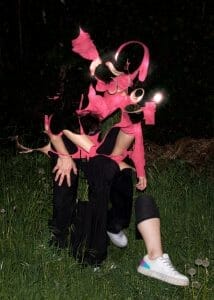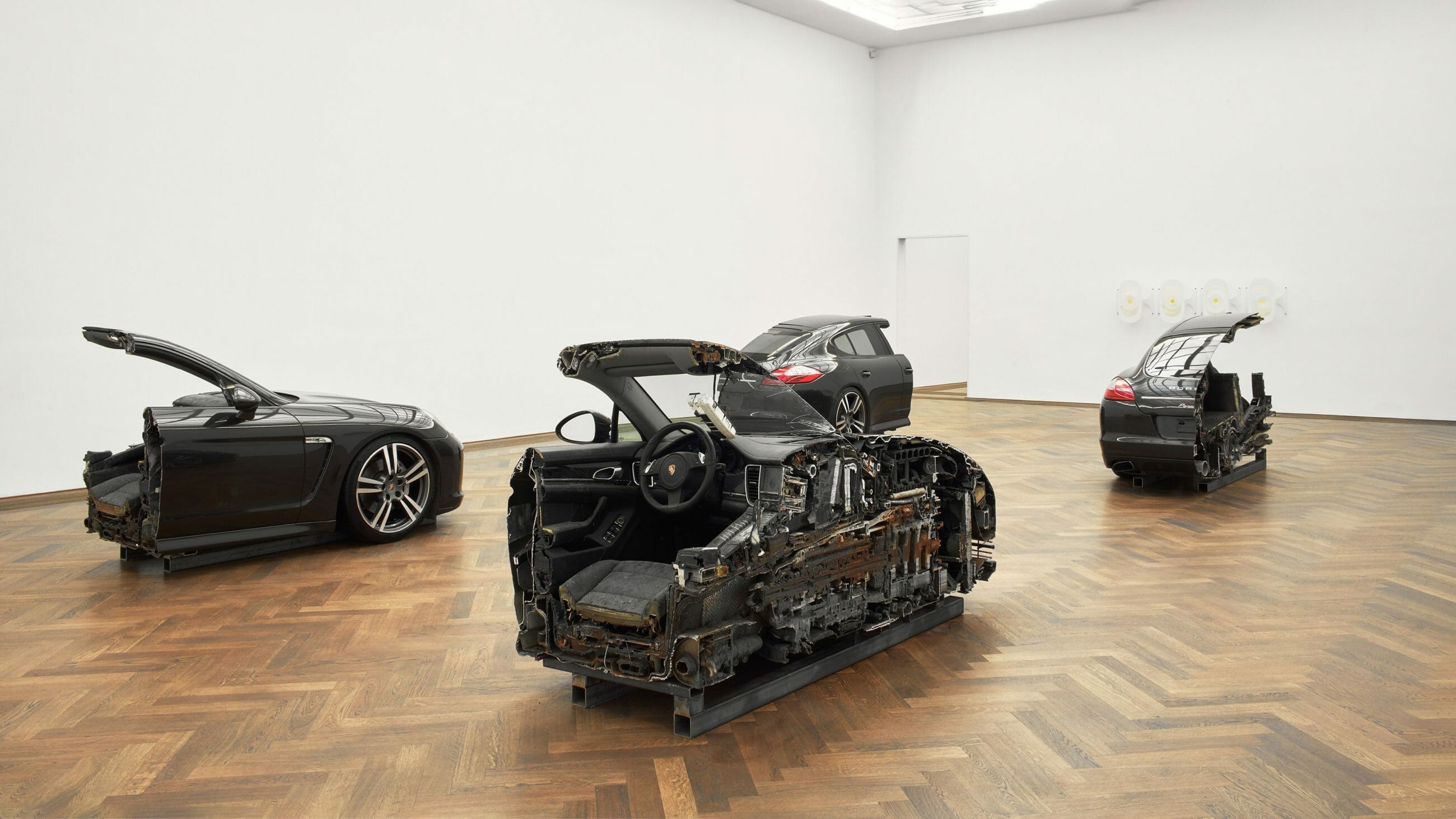
Anti-crash by Scerbo
Discover Scerbo, the artist who advocates for liberating art from predefined labels, thereby allowing it to fulfill its true universal purpose.
Scerbo initiated their creative journey with a deep-rooted passion for the physicality of sculpture and installation. Yet, despite their aversion to photography, it became a medium through which they could capture the ephemeral nature of their creations and the transient states of their existential explorations.
Embodying the cyclical mantra of “creation-photo-destruction”, Scerbo’s work reflects a fusion of philosophical insights, visual balance, and the study of materials. Their pieces, influenced by eastern philosophy, symbolic force, and metaphysical ponderings, are powerful testimonies to the transformation of thought into matter, and the evanescence of human experience.
Scerbo’s journey led them towards a deeper exploration of photography, seeking to distill the raw, instinctive, and primordial perceptions of the human body and its abstract extensions. They aspire to transcend photography into the realm of abstract painting, striving for a perceptive dissociation that unites the visual and auditory senses into a powerful expressive form.
Returning to their roots in Sardinia, Scerbo found a renewed love for sound, its healing capacity, and its rebel spirit against imposed dogmas and rational boundaries. This experience allowed them to merge photography with the sound of its creation, infusing each piece with an audio-visual impact that captures the real intensity of the artistic moment. Scerbo’s work is thus a testament to the power of instinct, energy, and intensity, forever pushing the boundaries of what is “possible/impossible” in art.
Scerbo’s newest series is called „Anti-crash“. This series embodies the onslaught of relentless data that shapes our lives, portraying visions that are both fragmented and reassembled by the flood of information.
The works are not merely distortions, but revelations, reflecting the invisible networks and pulsating veins of data that both feed our understanding and cloud our perceptions.
In creating, Scerbo sacrifices conceptual rigor for the sake of expressing the chaotic beauty of our data-saturated existence.
Join us in the following interview as we explore the depths of Scerbo’s mind.

1. What inspired the ‘Anti-crash’ collection?
The collection is inspired by itself. It was conceived amidst the illusion of a mistake during its creation. The program’s algorithm suggested a restart: error message, error message. “You’re doing it wrong: insufficient information to encode this collection.” No rational result could satisfy the eyes in the same way the senses do, and I’m not only talking about the 5 senses but the sixth, seventh, eighth, ninth, and so on exponentially. The sense of corruption from a transcendent origin of physical life is undermined by the source code, or rather, by the idea that the algorithm has conceived about it, and it is this idea it’s coding at this moment to define what the artist need not reveal.
2. Can you describe your process in creating these pieces?
I visit a powerful place with my partner, a place that infuses my veins with wings. I take 20-30 photos of her positions in space. Then I return home, download the shots onto my software, and begin to pierce the alpha levels with a digital brush I created by glitching the setting code. I observe the ensuing visual chaos and then wait for a complete idea to emerge from my mind. As soon as I realize that I no longer have any idea of what I want to do, the chaos suggests the way forward. The pen on the graphics tablet is moved by the total silence of my rhombencephalic brain area. Possibly, the neocortical memory of my hard drive is connected via Bluetooth to my hand and collaborates with my central nervous system to go beyond the will to understand what it is doing.
3. Why did you choose to represent hypersensitivity in the face of digital information overload?
Because digital information is much more extensive than the idea of digital language. What interests me is how digital information infiltrates the physical body of the absorber. Its frequency, the invisibility with which it enters the organism and unwittingly shapes it. What I’m saying is that today, if you’re not careful, you enter the web as person x and after 10 minutes of life inside the device, you’re already person y or z or more likely you’ve become someone else’s idea. What I mean is that the vulnerability or fragility of the digital artist is determined by verbal language, which has a logical value and is supported by a shared linguistic sense that exercises manipulative power on how you must be to be part of the community or how you can attract market attention. Instead, a hypersensitivity that is unafraid to enter the realm of frequency immerses itself in the confusion of feeling this bombardment of stimuli, without encoding or analyzing the meaning of what it’s absorbing, reaching a point of overstimulation that leads to a crash. It’s at this precise point that it releases its load of vital energy and begins, unconsciously, to decide how to express a state of being and not just a convincing idea to tell.

4. How do you see the role of art in the face of digital consumption and the data deluge we experience daily?
I view it as one of the few life forms still capable of engaging humans at a level that transcends what has now become the only way to exist in the world: the level of control. Nowadays, the value of existence is realized in its demonstrability, and its demonstrability is actualized in the plausibility of value, which in turn is realized in officially verifiable facts or by an unhealthy idea of competence needed to deserve that value. But this “sick social algorithm” remains at a level of artistic experience comparable to any other social, scientific, educational, or speculative activity, which exploits the algorithm of the digital universe to create a hierarchical structure of resource control. It is still manipulative. The digital landing of strong and free artists, on the other hand, undermines this foundation by exploiting its own roots, using data resources as sap that expands into silicon and reveals its emanation in the powerful vibration of work flowing on the web. Powerful aesthetic syntheses, capable in a nanosecond of nesting in the retina or the auricular membrane of its prey and then making its way to the spinal cord, finally freeing it from the automated control of its own genetic perceptual program.
5. The loss of conceptual rigour in the face of hypersensitivity, as presented in your work, is a powerful statement. Can you elaborate on what led you to this perspective?
In my “career” as an artist, I’ve spent several years indulging in the dangerous craving of visualizing concepts. I spent sleepless nights dissecting the essence of my pieces to reassure myself (and inevitably the “art world”) of some sort of orientation within my universe. But slowly, I realized that this desire for coding was almost always driven by a feeling of inadequacy, typical of those who pursue a grand dream with limited resources to achieve it. Speaking clearly: conceptual art in the hands of those with strong dialectical skills is a tool for manipulating value, both cultural and commercial. Many of the workers in the “cultured” or institutional art world exploit the idea of conceptual depth to fund ideas that convey a “touching” message that can capture attention and captivate an audience. But this type of approach is cool; it’s trendy now because it makes one feel important and culturally prepared. My conceptual work was authentic (albeit limiting for my expressiveness) but seeing that all that remained of my intellectual sensitivity was the satisfied ego of those who exploited my writings to boast about the prestige of being able to understand them hurt me too much, and it also hurt my pieces. That crisis silenced the concepts and unleashed a devastating emotional drill. At that moment, I transitioned from a phase of research to a phase of listening, and I heard what my sensitivity had to tell me. Now, I want to honor it, respect its secrets, make the realm of electrical impulses vibrate and not that of its demonstrative principles.
6. In what ways do you hope the audience will connect with your art, especially in relation to their own experiences with information overload?
I never think about the impact my piece will have on a hypothetical audience. When I create, I simply create. When I finish creating, I try to halt my creative flow, but since I can’t stop creating even when I’m in the deepest sleep, this question will remain unanswered. I would be more curious to know how the public connects with my work without handholds, seeing to what extent interest in art drives a person to genuinely want to interact with a piece of art, without it having been “designed” like an advertisement that ultimately aims to capture attention. It’s about time the public was willing to confront art by expending the necessary energy to do so, putting themselves on the same level as the efforts that an artist makes to create truly significant pieces. Today, almost everyone unconsciously demands to be stimulated and impacted without making any efforts, especially digitally, and often the exchange isn’t fair.
7. What role does chaos and disturbance play in your creative process and final artworks?
Disturbance is the engine of the evolution of my work. Anything that creates instability and confusion, all visual or auditory material that can distract reason from its desire to claim a plausible motivation for what it has created or experienced, automatically becomes a vehicle for an approximation to the unknown. That is a vehicle for a push towards what our human nature fears most: the fear of becoming lost. Well, I’ve gotten lost… or maybe I’ve found myself in a lost place. They say the blockchain doesn’t forget; maybe it’s not ready yet to host something that could cause us to lose ourselves in its memory. To get back to your question: what is the role of disturbance in my creative processes? I’ve lost the value of roles in my shots; I can’t identify the answer now, the role freezes my files, halts my coding. I’m sorry.

Unknown Collector
Digital Art collector supporting artists’ dreams and freedom to create Art they love.
You may also like
Yazid: The Art of Simplifying Complexity
Yazid is an artist from Brunei who uses code and algorithms to produce works of generative art influ

In conversation with Mario Klingemann/Quasimondo
In this episode of Fakewhale Live, host Jesse Draxler chats with Mario Klingemann, a Munich-based pi
Yngve Holen: Body and Alienation in the Modern World
In contemporary art, the human figure often takes a central position. However, in the work of the No






